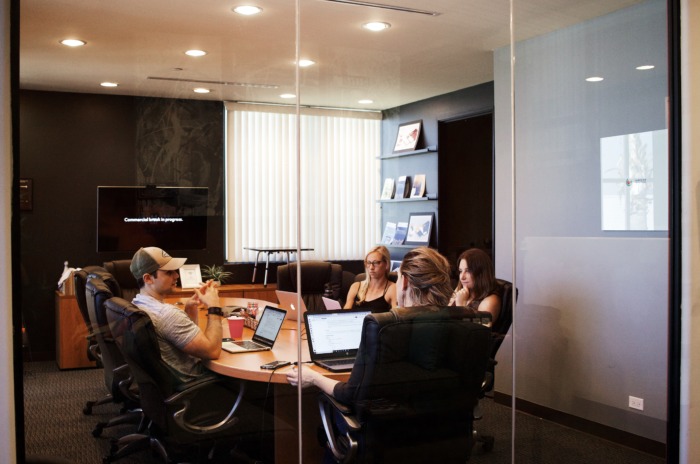
Managers’ fears about idle workers are creating “productivity paranoia“.
(Satya Nadella)
In November 2021, a survey on the use of ICT in Spanish households by the National Institute of Statistics of Spain revealed that, although most people who had tested remote working during the pandemic valued that experience very positively, different people mentioned diverse advantages and disadvantages of this way of working.
The results showed that there were people who wanted to work remotely but did not do so because their companies did not allow it and people who, although they could telework, did not do it because they preferred face-to-face work. People who worked 100% remotely missed being able to go into an office occasionally, and people whose jobs only allowed them to telecommute part-time wished they could do so more days a week once the pandemic was over.
In short, the data showed that different people, due to a variety of reasons, preferred to work in different ways.
Moreover, diverse people can prefer different ways of working for the same reason.
We saw this in a recent internal survey by Microsoft. Among the employees who plan to work the most in the office and those who plan to do it the most remotely, 58% of both groups gave the same reason: Because this way they work more focused.
Therefore, work preferences are a complex issue that gets even more complex when we add that a person’s work preferences can vary over time and be one or the other at different moments in their life.
In this context, first, companies need to understand (if they haven’t realized it yet) that many people, now they know what like and what not of each of those new ways of working, they want to have the option of working from the place and at the time that suits them best. Yet, this legitimate aspiration makes life more difficult for employers when people also say they want jobs that, in addition to providing them with a source of income, are aligned with their values and allow them to enjoy other dimensions of their lives.
Second, employers need to understand that the “one size fits all” approach, still common in so many companies, is probably not the best strategy when people are looking for “tailored suits.” In this sense, a recent Gallup analysis shows that when a company’s remote work practices do not fit with the preferences of its workers, the company runs the risk that its people burn out, lower their engagement, or directly decide to jump boat.
The good news, which makes us think there is a reason for hope, is that in recent months we are seeing that more companies are making changes to the hybrid work models they put in place when they reopened their offices. More specifically, we see a trend towards more flexible policies that give workers more room to decide where they work (and even their working hours) to suit their personal preferences.
And it seems that we have made some progress in that direction. Despite the back-to-office policies of many companies and the conservative hybrid models implemented by many others, according to a recent study by Qatalog and GitLab, 65% of people feel they enjoy more flexibility in their jobs than before the pandemic. But still, most of them would like to enjoy even more flexibility in the future, both in terms of where they can do their work and when they can do it. We see it in Buffer’s State of Remote Work report, where more than half of the people surveyed said they were in favour of ‘asynchronous first’ policies.
(Note also that many people prefer flexibility at work not only because they can enjoy a better work-life balance but also because they can achieve better performance. For example, in the report from Qatalog and GitLab, eight out of ten people say they are more productive and produce higher quality results when they have flexibility in their jobs).
However, in that same report, we found that work flexibility is still very unevenly distributed within organizations. While 74% of C-suite members declared they work asynchronously “often or always,” this proportion drops to 48% among VPs and directors, 32% among managers and consultants, and only 24% among analysts and administrative staff.
As the father of cyberpunk, William Gibson, said at the time, the future is already here and is just not evenly distributed.
Somehow, it is like the confidence managers have that their reports can work autonomously plummets as we go down the organization chart, which is not an unreasonable hypothesis if we consider that the trend towards more flexible work models collides head-on with what the CEO of Microsoft, Satya Nadella, has baptized as the ‘productivity paranoia.’
One symptom of this ‘disease’ is the gap we see in another report by Microsoft between the small percentage of leaders who say they have total confidence their team is productive (barely 12 %) and the large proportion of employees who feel productive at work (87%).
An abysmal difference in perceptions that, among other things, should call into question the impact of the large amounts of money many companies have invested for so many years in training courses, workshops, methodologies, and tools to create a ‘feedback culture’ in their organizations.
This ‘productivity paranoia’ is also behind the growth the market for IT solutions for monitoring remote work has experienced since 2020 and the endless succession of online meetings that have flooded the agendas of many people during these months. As it is one of the reasons why some companies have implemented back-to-office policies that ignore the opportunities a more flexible work model could provide them in a context where many companies have difficulties attracting and retaining the talent they need.
Besides the risk of ignoring that, according to data from Qatalog and GitLab, two out of three people would consider looking for a new job if they were not allowed to work flexible hours, and 43% would consider a lower-paid position if it offered flexible hours.
If men define situations as real, they are real in their consequences.
(William & Dorothy Thomas)
One direct consequence of these decisions of business leaders is the “theatre of productivity” Jessica Stillman writes about in her articles. We find it in organizations where people that work remotely feel they need to make themselves visible online to let others know they’re working. It does not matter if it’s responding to notifications or emails in real-time, making themselves “available” in their virtual work environments, or participating in one of the many online meetings that invade their agendas. A ‘theatre’ that, by the way, is not only due to mistrust from bosses but also to peer pressure. Notice that 54% of participants in the Qatalog and GitLab survey said they feel pressured to show their colleagues they are online (and working) during standard business hours. And this percentage increases to 68% among senior managers!!!
A sham in which, according to the same study, the average worker spends an extra 67 minutes online every day to prevent their bosses and colleagues from suspecting that they are not working hard enough. But it also makes people pay less attention to what they do and affects their performance. In this regard, it should make us think that, according to Microsoft data on the behaviour of its users, in an average week, 42% of participants of virtual meetings take advantage of those meetings to perform other tasks such as sending emails or instant messages. And this percentage does not include other activities such as reading incoming emails and messages, working on files other than those used in the meeting, or browsing the Internet…
In summary, though more companies are implementing flexible-work policies, others suffer from a ‘productivity paranoia’ that deprives them of the advantages flexible working conditions could offer them in a context where many have difficulties attracting and retaining talent. And those decisions, in turn, cause a ‘productivity theatre’ that, paradoxically, produces just the opposite effect to what the leaders of these companies intended with their decisions, turning the ‘productivity paranoia’ into a self-fulfilling prophecy.
***
Image Chris Gold NY under a Creative Commons license
Did you like it?
Future for Work Institute operates on an annual subscription model that includes access to our calendar activities and knowledge repository resources, as well as in-company services.
Plan
Curiosity
Recommended for HR teams of between 5 and 20 people.
Plan
Pioneer
Recommended for HR teams of between 15 and 100 people.
Plan
Exploration
Recommended for HR teams of more than 100 people.
Plan
Horizons
For more complex organizations.
Already Registered? Log in here






